I am someone who has always been curious about most everything. Since childhood I have not been content to simply observe the world around me. I have always sought the truth – the reasons why things are the way they are. I don’t pretend to have found the truth, but I have had the good fortune to come close on many occasions. I seek the cause of what I experience in life and a path to share what I find with others. This has been the source of life for me and when I am true to my source, fulfills my soul’s purpose in being here on the planet at this time.
So what has all this to do with the Hearts Of Fire Project? The project is my inspiration and an expression of who I am. I have given it most of my time and energy since it began five years ago. As I have worked on this project, I have received great love and support from many people. I am very grateful for that. Our mission of empowering homeless people through artistic self expression definitely works and has made a difference. However, I see a new role for me and the project which represents both an expansion and a shift in focus.
In following my natural inclination to investigate the causes of what I see, I have been increasingly drawn to the uncover the causes of homelessness and poverty. Although many people who are better trained in this field than I have worked on this, I have approached it with a new view, a new vision of who homeless people are. That vision was the source of the project and continues to spur me on.
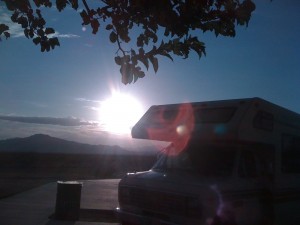 I see homeless people not as victims but as leaders. They are leaders in a new paradigm for living that is based on the inherent value of human beings rather than what we own or consume. Among the homeless, the human capacity for connection and compassion is the primary source of value and respect. This alternate social structure exists independent of wealth and possessions because the homeless have little of either. As a result, the poor and homeless have developed a social structure and way of life that more closely resembles ancient and indigenous societies than the current consumer culture in which we now live. These social structures provide a more natural way of life that connects us to each other and the earth and is aligned with our basic human needs for love, community and sustenance.
I see homeless people not as victims but as leaders. They are leaders in a new paradigm for living that is based on the inherent value of human beings rather than what we own or consume. Among the homeless, the human capacity for connection and compassion is the primary source of value and respect. This alternate social structure exists independent of wealth and possessions because the homeless have little of either. As a result, the poor and homeless have developed a social structure and way of life that more closely resembles ancient and indigenous societies than the current consumer culture in which we now live. These social structures provide a more natural way of life that connects us to each other and the earth and is aligned with our basic human needs for love, community and sustenance.
As I have traveled the country talking and working with homeless people and those that work them, I have come to see that we need them more than they need us. As our unsustainable economic, resource and social structures decay, we will begin to form new structures that truly support us and all life on this planet. If we don’t, life will perish. The earth naturally renews itself and is in the process of doing that continually as it has for millions of years. We can chose to be a part of this renewal or we can disappear with the other waste that the earth washes away.
The homeless and the poor know how to exist in a human based, non-resource intensive manner; they have been doing it for years. In fact, they have been doing it despite the persecution and oppression of the much larger consumer culture which surrounds them. So who is better equipped and better trained to teach us how to live with what we really need instead of what we think we want than those you are already doing that – the poor and homeless. All that is missing for them to begin to teach us is a shift in who we think we and they are. Once we understand that a new, biosphere-friendly world is inevitable and that such a life would be much different than our current reality, the importance of our teachers is evident.
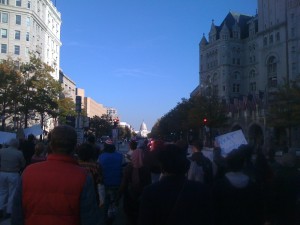 It is true that many of the poor and homeless currently lack the means to deliver their knowledge and experience to the rest of us. Many have been damaged by living in a world that punishes people for their poverty. As a result, they need to be empowered in order to help us move into a new human-based paradigm. When they are empowered, they can help us. How can we empower them? Simple. By providing a meaningful avenue of contribution; a way for them to share their wisdom with the world. This has been the role of the Hearts Of Fire Project. But until now, the expression and acceptance of that role has been limited.
It is true that many of the poor and homeless currently lack the means to deliver their knowledge and experience to the rest of us. Many have been damaged by living in a world that punishes people for their poverty. As a result, they need to be empowered in order to help us move into a new human-based paradigm. When they are empowered, they can help us. How can we empower them? Simple. By providing a meaningful avenue of contribution; a way for them to share their wisdom with the world. This has been the role of the Hearts Of Fire Project. But until now, the expression and acceptance of that role has been limited.
The Occupation Movement has opened a new conversation about our economic and social structures that transcends differences in race, religion and economic class. The encampments of which I have been a part, are inclusive and are serving as a laboratory for the creation of a new society. One of the important values of this new society is an inherent respect for our shared humanity and an understanding that real happiness lies in community and connection. It is not an accident that the occupations have emulated in many ways the lifestyles of the homeless. In fact, many of the streets and parks occupied by the movement were occupied for many years by the homeless. Thus, the homeless are the original occupiers.
The homeless were the first to occupy these public places, but unlike the occupiers, they did not have a powerful context for living there. Their occupation was simply a survival tactic, something born out of necessity. In addition, our society reinforced that context condemning them to a life on the margins of existence. The occupations appeared in the same parks living outside with little or no shelter in much the same circumstances as the homeless. Why did this happen?
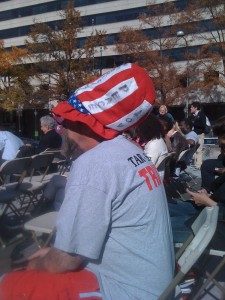 Although there are at least a couple of reasons why the movement chose particular public spaces for occupation, what is the reason for choosing to live on the ground or in tents. Why not occupy during the day and go home to a comfortable bed at night? The reason is that a community requires a shared living space, in much the same way as a family living in a house. Shared space is critical to the development of connection between people. Consequently, the occupation was based on the desire to create a connected community rather than simply a demonstration or a meeting. I can attest to the fact that a real sense of community connection was created at the occupations. For me, I feel like I really have a new family, a group of people that I know and love in a way that I never knew was possible. I don’t know if it was our shared purpose, our commitment to the movement or maybe just getting through it all together, but something made me feel like I really have a deep connection with my fellow occupiers.
Although there are at least a couple of reasons why the movement chose particular public spaces for occupation, what is the reason for choosing to live on the ground or in tents. Why not occupy during the day and go home to a comfortable bed at night? The reason is that a community requires a shared living space, in much the same way as a family living in a house. Shared space is critical to the development of connection between people. Consequently, the occupation was based on the desire to create a connected community rather than simply a demonstration or a meeting. I can attest to the fact that a real sense of community connection was created at the occupations. For me, I feel like I really have a new family, a group of people that I know and love in a way that I never knew was possible. I don’t know if it was our shared purpose, our commitment to the movement or maybe just getting through it all together, but something made me feel like I really have a deep connection with my fellow occupiers.
I believe that this shared connection, this sense of community was created because we shared a commitment to the movement. The community created new avenues for each of us to contribute to others, a way to selflessly serve people that we knew and with whom we shared a sense of commitment to something larger than any of us. The opportunity to contribute provided a sense a fulfillment and strengthened our connection. In essence, we established a positive feedback mechanism that allowed each of us to be appreciated and for the community to empowered.
Many of the homeless people continued to camp in the parks that we occupied. Others came and joined the camp later. Some of these people chose to join the occupation community and actively participated in the community. Other chose not to do so and eventually moved elsewhere or went to a shelter. Unlike other cities, Washington, D.C. has enough beds for local people who need one and enough soup kitchens to feed everyone. So the people without homes who remained with the occupation chose to join our community.
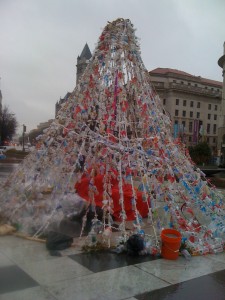 Why did so many choose to live with us and participate in the community even though there were other, more familiar solutions for them? I believe it was because there was an opportunity to contribute to and be part of a real community, a group of caring, committed people. In many ways, this was a unique opportunity to live with people who consciously chose to be there instead of people who felt that they were forced to be there. This was an entirely new approach to dealing with the circumstance of not only homelessness but of all the other emotional and physical issues that impact people who live outside on the streets in an urban environment.
Why did so many choose to live with us and participate in the community even though there were other, more familiar solutions for them? I believe it was because there was an opportunity to contribute to and be part of a real community, a group of caring, committed people. In many ways, this was a unique opportunity to live with people who consciously chose to be there instead of people who felt that they were forced to be there. This was an entirely new approach to dealing with the circumstance of not only homelessness but of all the other emotional and physical issues that impact people who live outside on the streets in an urban environment.




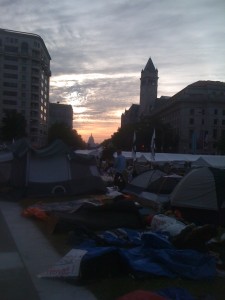
WOW,WOW,WOW !!!!!!
What a statement and message.I will continue to donate whatever I can in the future.Would like to meet the members of this great group of people at some point.Sooner than later I hoping.Good luck.
Peace and Love
Chris Parenti
Besides having the honor and privilege of being the Hearts of Fire Assistant Director, I am employed as a Case Manager and Homeless Outreach Worker in Santa Barbara with two distinct programs assisting individuals who are without homes, at least in the traditional sense we are normally accustomed to. New Beginnings Counseling Center’s Safe Parking Program assists people who dwell in their vehicles. We currently have 22 lots with 120 spaces that serve approximately 150 men, women and children. The other program I work for is WillBridge of Santa Barbara, Inc., where I help individuals referred with drug/alcohol addictions, mental and/or physical disabilites. I have been involved in this type of work since the 1980’s when I began people-to-people initiatives to take care of our own. Given that there are more individuals becoming homeless daily in our nation and the numbers are growing still, shouldn’t we be looking more at the root causes of homelessness rather than just dealing with the effects of it? That is why I have been such a staunch supporter of the Hearts of Fire Project since its inception. This project is about valuing human beings, loving people for who they are, and caring enough to bring out the best in them. One of the women who we recorded at a shelter in Santa Barbara almost four years ago recently contacted me. She has turned her life around and now helps other struggling musicians produce their music. Helping other people succeed in living productive, prosperous and fulfilling lives by expressing their passions and talents is one of our greatest results as a social-profit organization. While I was only at Freedom Plaza a few days, Bob’s dedication to remaining there has allowed him to make a vital discovery about what it means to be a human being at a whole new level at this time in history. Our nation’s consciousness is being reborn out of the Occupation Movement by the people who have the courage it takes to step out of the economic, social, political and cultural patterns that have caused so many people to become homeless.